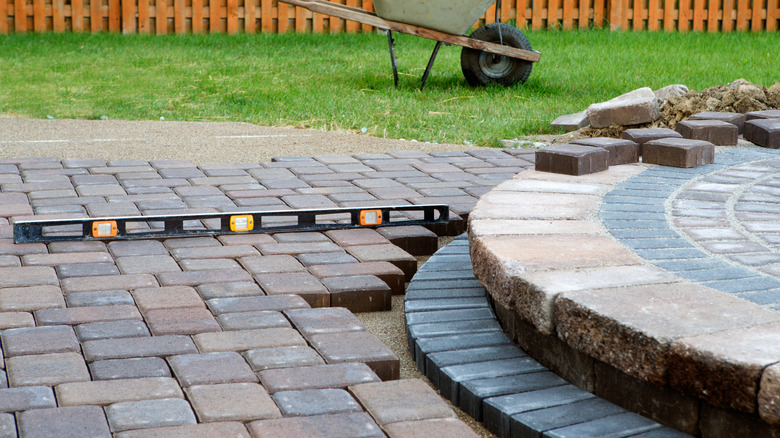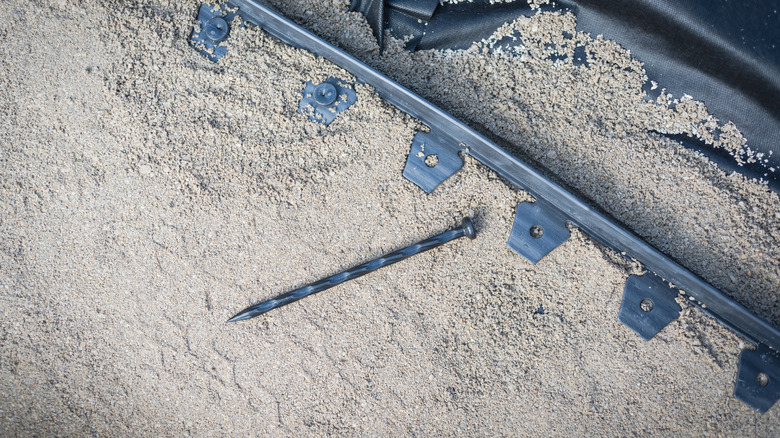The Best Method For Edging Around Your Pavers
Before planning your DIY paver project to elevate your yard and up your curb appeal, keep in mind that edging is an essential step to maintaining your hardscape. In fact, the shifting ground under your pavers, the elements, and other wear-and-tear circumstances could ruin your outdoor space without it. Edging creates a clean line outside the pavers, elevating its aesthetics, and acts as a barrier to keep your hardscaping design in place and the grass around your project away. The first step to edging like a pro is choosing the right material type, which largely depends on the project, and placing it along the outside of the pavers themselves. Plastic restraints, metal edging, concrete, and concrete-like products are all viable options.
If you're using pavers to edge your lawn and your yard has curves, flexible plastic or metal edging might be the best choice. Those might also be good choices if you're edging your flower bed. On the other hand, paver projects likely to experience heavy traffic might stand the test of time better with concrete or concrete-like edging to keep everything in place. Include your edging choice in your overall paver project plan, map out and mark your project areas, gather your materials, and begin.
How to lay the edging
When digging your project area, be sure to leave enough room for your chosen edging and lay a strong foundation of compacted gravel and sand for stability. Once you've laid your pavers and everything is complete, insert, place, or pour the edging on the outside of the hardscape. Not only will it give you a nice, clean finish, but the edging helps the pavers stay put.
If you're using plastic edging, you want to either trim it to fit the area or join the strips for larger projects, put them in the trench, and place the end pavers on the plastic tab and up against the edging. Backfill with dirt or mulch to keep it tight. And don't forget to add anchors to ensure the plastic stays in place. Metal edging works in a similar way but uses stakes to keep the material in place. Hammer the edging down with a rubber mallet if necessary, stake the edging down every 18 to 24 inches, and place the end pavers up against the edging on top of the tabs.
Concrete or Perma-Edge (a flexible concrete-like product) is also an edging option. Make sure your trench is wide enough to accommodate your chosen edging material. Mix the medium according to the instructions and create an edge next to your pavers. For this type of solid edging, there's no need for anchors because the material will bond to the pavers themselves and seep in between. Once you've edged your paver project, you can rest easy knowing it will stay in place and look beautiful for years to come.

